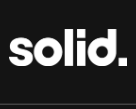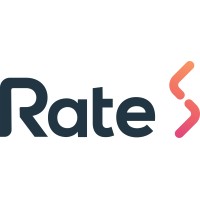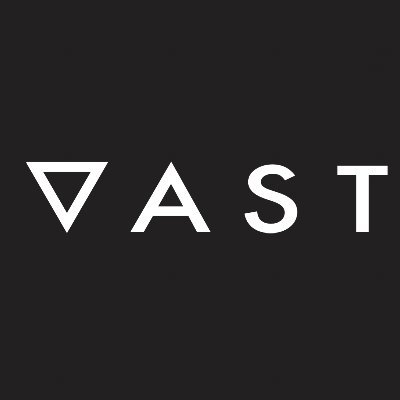
By:Sui by Mysten Labs
English Transcribers:Jessie
Proofreader: Joshua
Editor:Qi Yi

The Host
Ok, I think we’re going to start very shortly.
Alonso are you on?
Alonso Degortari
Hey John, how are you doing?
Morning.
The Host
Good morning.
Actually, I think it depends on the time zone, on my side of the pond, Currently, it is morning here in Singapore, as a notice several of us are here in token 2049 and I think Alonso, you’re on a different side of the coast.
Alonso Degortari
Yeah, I’m in San Francisco. Today I’m also hopping across the country to the circles converge conference, which has been really cool. We are giving a talk tomorrow, with Sam, the CTO with Mysten Labs on the move programming language and so it’s going to be pretty exciting.
I think there are a lot of important synergies between the safety of move and the safety of sort of USDC. An economic design and so, for sure it will be an exciting talk.
How’s your life? How is Singapore going on? It must be. Really exciting to be over there?
The Host
What we’ve actually seen with different events, there are a lot of builders, especially in the APAC who are coming through. And you know, I’ve had also the opportunity to talk to a lot of other marketers, just to kind of get understand some of the pain points and really great kind of activations. They’ve been able to do so. It’s been a really great learning experience, I think for the entire team.
But people have a vision of ‘ Oh, you’re in Singapore. You’re at this really great conference. It sounds glamorous. ‘ I also want to kind of show people, I think along so you can also relate it’s. When you go to a conference for the most part your life is basically divided into going to the Convention Center or wherever the conference is taking place, staying at the hotel to like a drop, grabbing a very quick sad lunch, and then just running throughout the rest of the day so you don’t even get a chance to really explore the city or have time to do much else beyond, just like you know going through the process. So there is also sort of the drab side of things, too, so as much as people try to make these conferences look really, really glamorous. It’s not as glamorous as it seems.
Alonso Degortari
Yeah, for sure, I mean, I feel like you, you fly around across the world like 18 hours to arrive in Singapore and you spend 4 days hunkered down in the conference room and meeting with people and running all over the place and then you go back home and people are like ‘ How is Singaporean?’ you’re like ‘ you know what? I don’t really know that said I do think it’s kind of glamorous. It’s pretty cool that you guys are over, there and you also get to meet a lot of people in that APAC region.’
as you were saying, I wonder if is there any particular use case or team that’s building something that surprised you. You know makes you very excited both for the web3 World in general and also for SUI.
The Host
I totally missed that last part cause connections are also kind of bad on my side.
Alonso Degortari
Yeah, no worries. I was just asking is there anything have you met like with any team that is building something that really caught your eye? So it’s really exciting both either for you know the overall web 3 ecosystem or for specifically.
The Host
I think you know what we’re seeing from a project side that I think is fascinating. We hear about projects more from a theoretical angle and I’m noticing more and more that projects are bringing it down a bit to Earth and making it relatable to impact the end user.
I think most people, the general wider audience don’t care about web 3 because most of the projects seem to be more B2B focused on infrastructure which, obviously it’s very important, but I think what’s been exciting is you’re seeing more projects that are kind of show how they would protect consumer data, but still make it easy to migrate you know customer relationship management capabilities between companies so that actual brands can make you know enriched loyalty programs for you and give value in that sense, but still protect your data because I think people are very suspicious now of a lot of social media companies like Twitter or discord.
So I think that’s been kind of more of the exciting parts of the conference. We’re seeing more and more people actually show how this could help regular consumers as opposed to just purely businesses and startups.
Alonso Degortari
That’s awesome. I’m super excited about that. I hope we can enable a lot of those use cases with SUI once we go live with Mainnet.
The Host
Yeah, I think that’s kind of the bigger challenge right now, the focus absolutely should be on builders because we do want to enable our ecosystem to have as many exciting projects being built as possible.
But the second part of that story that we’re focusing on at least on my side is great, there are all these fantastic projects why I should care? Here you know, so that’s the second part that we’re really working to build out so that people understand how this impacts.
You know their day-to-day or how a regular person who has a wallet can really kind of dive in. The topic of our AMA is tokenomics and decentralization. I’m going to be basic and ask you what is tokenomics. Can you provide a quick overview of the sui token and sui incentives and tokenomics?
Alonso Degortari
That’s a great question. It’s a great place to start because first of all tokenomics is a little bit of an ill-defined term in the sense that it means different things to different people. I think for a lot of people what tokenomics means or when they ask about sort of protocol or projects tokenomics, they’re really referring to what is the initial allocation of tokens of that protocol and how are they going to be distributed? How that allocation is going to change over time? I mean in general how is that token Going to accrue value.
Because people want to think about this a little bit more from the investment side and try to understand how those price dynamics may evolve depending on both the protocol and product success, but also in terms of the utility that it delivers and how well it integrates with the rest of the ecosystem and so on.
And I think actually a more accurate description of the tokennomics goes much deeper in really referring to sort of the incentives that are present in a product so that it can be sustainable in an economic or financial sense in the long run. Sort of what are those different elements that require a lot of design decisions to make sure that product can be successful in that economic or financial sense, so maybe the easiest way of Making a little bit more concrete, is actually going through the tokenomics of SUI.
The tokenomics of SUI are fairly complex. There are whole 20-page White papers with a lot of math and complicated that sort of go through the specifics, It’s also fairly easy to comprehend and understand whether you know it delivers the right incentives for SUI.
All the tokenomics have one big common element, which is the SUI token. The Sui token is the native asset of the sui blockchain. It will be in existence with capped or finite supply of 10,000,000,000 tokens in the long run and that sui token basically serves 4 purposes.
The first one is that it can be used in sui proof stake mechanism, and the second one is that can be used to pay for gas fees when using or interacting with sui network, the third is that basically native on-chain liquidity that can be used for all sorts of different use cases that require on-chain liquidity. And the fourth one here’s where perhaps there’s a little bit more to be designed by sui token holders, It will have some form of claim on governance over the sui protocol in the long run.
And when I think about real sort of what are the incentives that are present in the SUI blockchain. There’s I could really separate them into 3 sorts of bins and I’ll describe very briefly.
The first is everything that has to do with the proof of stake mechanism. Now the previous stake mechanism is basically what secures the Blockchain and ensures that its operations by validators who are the ones that operate the network can be sustainable on an economic basis and the sort of token holders can exert some degree of security on the network through SUI token.Decentralization is going to be very important there in order to ensure that the incentives are right. That’s sort of the first part of the proof of stake mechanism.
The second category of things or incentives is everything that relates to the gas mechanism. The gas fees so essentially the gas mechanism. The gas fees are sort of the way that the network. rewards from its operations and then use those rewards to distribute them to the network operators. So it goes very much in hand with the proof of stake mechanism. But the way that the SUI network’s gas mechanism has been designed, isn’t a way to try to ensure that the gas fees that people pay you know regular users. Who is doing peer-to-peer transfers or interacting with the smart contract or whatever, the goal is for that gas mechanism to incentivize? Gas fees on the sui network to be as close as possible to what the marginal cost of running those transactions are so another way, you know, another way of saying that is, we’re trying to deliver a mechanism that let validators have a sustainable business model in the sense that you know. When validators are operating the network and they have the hardware. They have fixed costs like electricity they have some operational overhead in the sense that you know they need to be connected to the web and be talking to the other validators and they probably have some people on their teams and all this sort of stuff. Those costs are more than offset by the rewards the network is making but at the same time, those rewards at the network is making through gas fees are low enough that said the network is very competitive for sui users who are sending a peer-to-peer transfer is really paying a minimal amount of gas fees In general. Gas will probably be a little bit higher, depending on the complexity of the interaction. That you have with your sui network but in general. They should be very low and make sure the user experience from a financial perspective is very amicable for the end users. So that’s where the gassy mechanism and I know that was sort of very high level.
There are a lot of details that we can dive into if anyone is curious and has more questions on it, but that’s sort of the second bit of incentives, the very last set of incentives is what I would call everything related to the storage fund and this is something that’s a little bit newer and is a little bit specific to sui in the sense that SUI architecture has been built in a way.
It is fairly easy or economical Infeasible to store data on the other Blockchains in which like there is much less block space and it really sort of block spaces is a luxury and storing data is just you know uneconomical. It would cost an insane amount of money in SUI while it’s probably the case that storing certain types of data are going to extend expensive. for example, storing a 3-hour high definition movie probably going to be out of reason, but there are a lot of other types of data that are very useful. For example, a low-resolution JPEG or maybe some form of document if you’re doing it..some sort of supply chain management that requires documents so on, and so forth.
The engineering front will be expanded as time goes by, but the point is that there is some amount of data that can be held on the SUI blockchain, and what that means is if you have that capability, You need an economic mechanism that is going to make sure that the people who are paying for that storage.
You never want to have that sort of free rider problem in which people are using a service and not paying for it because economists would say there’s no free lunch. If someone is not paying for something then somebody else needs to pay for it. A different way of saying that is for example if a bunch of people were to use it solely to store a lot of data and they didn’t pay for it. Well, that would cause an extra anality on future users of sui because basically the future validators are forced to hold that data on the chain.
From the people, that story, to begin with, will charge those future users The cost of storing that data now that’s not very fair because why do you have to pay for the data that other people stored
So what does the storage fund really do? It would make sure that you store data on the chain today if you send a transaction.
That is gonna start some amount of data that you just pay for it and the storage fund really is an intertemporal mechanism of making sure that those fees that you’re paying today to cover the cost of storage are actually able to cover the cost of storage in perpetuity, the storage fund like the other elements of SUI blockchain is fairly intricate and we can go down into the complexities. But it really is just a set of incentives to make sure that when people use something they pay for it in this case storage so broadly speaking and I know I’ve been speaking a law, for now, that’s how I would define tokenomics. It’s really about the incentives that is present in the blockchain ecosystem and in sui, it all boils down to the SUI token and there are 3 sets of intermingling incentives, which are the proof of stake mechanism, the gas mechanism, and the storage fund.
The Host
Got it, I think that kind of really breaks down beautifully. a few weeks back, We had the blog post on your tokenomics piece so. That’s been answered in detail and I hope we’ll have the recording to share out in case people miss, but there’s another key aspect that people ask which is the second part of this ama. Do you know what are the forces that really determine decentralization on sui?
Alonso Degortari
Yeah, that’s a good question. And it’s really sort of one of the most critical points. When you think about blockchain ecosystems. These incentives in order for them to really kick in and work very well. You really need a variety of different actors to act independently, another way to say it is if there is an important degree of centralization. It’s much easier for there to be collusion. And when you have a collision, It’s much easier to break these incentives and for bad things to happen.
that’s not something particular to sui. In general with these decentralized distributed systems. what I would say is a little bit special about sui is that.
Sometimes you know a lot of people get to ask us. How many validators the sui network will operate with, and the sort of distribution of ownership over these validators be more rich or diverse than that network is going to be automatically more decentralized now there is a flavor in which? That is also true in the sui network, but it’s very important to realize that sui what matters is not really the number of validators because with the ways we work going back to the sort of proof of stake mechanism is. In sui, most of the stake that validators used to operate is delegated. It’s a delegated proof of stake mechanism. What does that mean?
Well, it means that if for example, I know I’m just a regular Retail user who has some amount of sui, I probably don’t have the bandwidth or the capacity to run a validated myself. But I want to participate in sui security because maybe it offers me some financial incentives or? Maybe just because I care about the sui network and I care about decentralization So what do I do? I’m going to delegate my tokens to my validator of choice and then in a sense that validator is going to use my stake, To increase its voting power whenever processed transactions which also means that when the network distributes rewards to validators. I’m going to sort of receive those rewards. Through the validator at which I stake my tokens and that validator of choice is going to be able to keep a small Commission of those rewards for providing this service for me.
In the sense of running these valid validator services so really what matters if you think about it. Given that it’s mostly delegated stake is the distribution of stake across validators, the really important thing in sui is not the number of validators, but that you have a distribution of stake that is fair and that most importantly means that if some validator were to do something wrong for example, Operate a little bit inefficiently that I as a delegator can easily move to adapt to the validator that’s operating a little bit better to whatever my notions of fairness and optimality are.
The reason why that’s so important is that the thread point is what really incentivizes to valid validators to operate well again because validators make commissions on the rewards accruing to the stake that people delegate to them. For a validator, a too lose stake is a bad thing and so that sort of really what matters and really if you think about it. You don’t need to have 5000 or 10000 validators in order for these intensive to kick in you probably actually don’t even need more than 50 or 100.
A useful analogy that often comes back to me because I think it’s a very easy way of understanding. These incentives of decentralization are the notion of representative democracy in our political systems, so for example. It’s very costly for the country to say everything we do, literally every law. We pass every budget amendment. We do every single decision. The government does for it to pass through a full-blown referendum of all Citizenship. that’s just it’s just very hard. It’s very expensive and it’s also not what you want because people don’t have the expertise to be experts in everything so the way the most developed countries work is they have a notion of representative democracy in which people elect officials to represent them. The most useful analogy here is like a parliament: and so the way of Parliament Works is you choose. The moment your member of Parliament starts doing things that are not really an according to your views. You switch to another one that’s a little bit more amenable and if you look at the way successful parliamentary systems work in the world, you don’t need 5000 parties for them to be successful.
Now, it’s probably also true that 2 or 3 or not enough. But maybe 20,50 or 100 is the right number in away decentralization for delegated proof of stake system like sui is very similar. You only need a few validators to be able to hold that stake distribution and be able to operate the network, but you also need a handful of the validators to exist so that if the validated that you’re operating with you suddenly decide that you don’t like them anymore. You have an option that’s better in that thread when is one sort of aligning them with the long-term interests of the network
That was a little bit of a long answer And it went into this sort of notion of parliamentary democracy and Whatnot, but I think sort of the TLD is here is that? What really matters for sui to be decentralized is at the ownership of the sui token is very decentralized but the validators don’t have to be such a big number. You just need to have a somewhat fair Distribution of stake and need to give users the ability to move their stake sui across validators very easily so that they can use that thread point to incentivize everyone to act optimally.
The Host
I think that helps summarize some of the fears people have had about how decentralized Will sui is. How we view that term and it’s not necessarily as he said purely based on the number of validators it’s also the distribution of the tokens themselves so hopefully people. You know take that’s the heart and know that we have thought through many different elements. Of this process. But how can someone hold sui tokens and participate in the proof of stake system and more importantly? How can someone become a sui validator?
Alonso Degortari
Yeah, that’s a great question, and again just to remind everyone where we’re at we’re currently our debit is live, which means that right now, it’s version of what we’re going to look. What sui is going to look like it may not it’s missing a lot of elements because it’s still in the development phase. The validators that are running the network are all run by Mysten Labs because we haven’t because it’s not the real network.
Implemented decentralization yet the next stage is to go to the Testnet,at that pays the validators will be run by external entities and we will start sort of getting the first innings towards that decentralization in the sense that the network is operated by external actors. These validators and we have the proof of stake mechanism, so that we really prepare so that when the sui token goes live in Mainnet launches we do have that strong decentralization and then knocked up the network and operate with all the correct incentives so going back to the question of how can someone you know participate in this? Well, you know there’s going to be a bunch of ways for people to get access to this sui token when it is live. it’ll be a token that as the native acid of sui blockchain. You know you can use it,You can go to an exchange and buy it or there‘re other on and off ramps for getting access to sui token.
In addition, this sui Foundation, which is currently being set up whose ultimate mandate is really to promote the ecosystem and to promote decentralization will have a bunch of programs that will start to be announced. In the near future,to which people will be able to apply for example, for developer grants and so you know if you’re a team that’s building something for sui. Even you need some amount of funding, you will be able to go to the foundation and submit an application and receive some sui tokens in exchange for your project and if you hit additional milestones commit perhaps get more really as long as the project is aligned with the long term interest with the sui blockchain that those programs with the sui Foundation are not live yet. They will be very soon in the real goal is because ultimately sui is owned by everyone is owned by the community. Like the the foundation’s ultimate goal is to promote decentralization and so those are some of the ways. That’s going to happen and going back to the sort of that initial question of what is the token allocation going to look like first we at Mainnet I will say that there’s a large large very substantial. Portion of tokens that are owned by the foundation and the foundation very much will distribute these tokens over the next coming years. In order to push that mission of decentralization because that’s the ultimate goal now that sort of gives you some answers into.
How can people hold their sui tokens once they actually hold the tokens? How do they participate in the proof of stake mechanism. There’s going to be a variety of ways. You know, there might be some custodial solutions from non custodial solutions, But at least something I can tell you from talking to some of the wallet partners that are already building on sui. Many of them are thinking about making it very easy from user experience standpoint to participate in that mechanism. So essentially you know if you hold a wallet in an address that has some sui tokens. You can choose to lock them into the previous stake mechanism delegate them to a validator of your choice and start reaping the rewards. And participate in sui proof of stake mechanism.
Now the question of how do you become a validator there you have a little bit of the cold start problem that in order to be a validator you probably do need a substantial amount of sui tokens and. Unless you are someone that has already a ton of capital or liquidity. It may be a little bit hard to amass that so I think this is not set in stone, yet, but I think something that will probably happen is again this sui foundation and its mission.
Towards decentralization is going to open up some form of program so that you know if some group of people in some partand of the world have a very solid team are able to run good operations in one run?
Sui validators ,maybe they can apply to the Sui Foundation, so that the Sui Foundation Delegates a large share of their stake to these validators so that they can also participate.
To decentralize sui across many different paths, both for retail users for both potential validators, but also more generally for other participants of the sui network.
The Host
Perfect and we’re probably going to get a lot more questions now that you’ve opened Pandora’s box around how people can become validators. We’re seeing some related questions on both our discord and event chat as well as some mentions on Twitter so please keep those questions coming in. Now can you share more about the future plans that you have for tokenomics and its use cases specific to SUI and how do we intend to stay innovative in this area in the long term?
Alonso Degortari
Yeah, that’s a great question and I think you know, everything that we’re doing in sui and this is probably also true in many other Web3 ecosystems is probably in the web 2 World, right? is nothing of what we’re doing is static right, it’s always alive ecosystem and things are growing and you know as we go to mainnet will learn more things about how the specific instances of the tokenomics are working and in that sense will have to update them so that they are more attuned.
With the network’s long-term interest, for example, there might come a point in the future in which you know SUI is successful that there’s just so much data on-chain that we have to start thinking about how validators in full nodes need to deal with historical data that sort of was stored very back in the day and might not be so relevant.
How do we adapt this notion of the storage fund to deal with that? I think those are going to be really interesting questions, it’s a little bit hard to address because we don’t know exactly what’s going to happen on the sui network because you were not in a live environment. I think we can probably all be confident that there will be. A lot of activity in a lot of cool teams and developers building stuff. But the exact nature of those products of how they leverage interoperability compose the ability to develop a sui system. Is it still a little bit open? Question and some of the tokenomics elements ultimately will have to be adapted and So what we’re doing in order to address that is.
You know, we’re just very aware of what we are design choices might need improvement in the future. But at the same time, you know, we don’t want to over-engineer things because sometimes one thing that can happen is that if you try to do too much at the beginning, too quickly. It’s really hard to tell down the line. What’s actually working you sort of didn’t introduce elements gradually and so that’s why also some of the elements at least in the tokenomics that we’re introducing are probably a little more MVP versions right now, it will be upgraded gradually to more. Complex things that are a little bit more efficient.
But it will also help us and not only us the overall sui community learn about how these things are working and make sure that they are aligned with the network’s long-term interest and I think governance is going to play a very important role there.
Because even though right now, we’re the team that’s building sui, we get a lot of help, and feedback from people on discord or people that are contributing to GitHub. Sui is going to be owned by its community by the people that use it and over time as people start to identify things that can improve and submit. Sui improvement proposals that can make the network even better. We’re doing what we think is the best course right now, but we’re maintaining the option value of improving things as time goes by, and we’re working really towards the community to deliver that type of feedback that will let us know what needs to improve it in what shape or form?
The Host
So I hope the community has heard that feedback is imperative for us to continue improving not just the entire process, but as we continue going through our different testnet waves. This is going to be very important for us. This is kind of more relevant is especially considering the environment that you and I are currently in both at our respective conferences. Why should users consider sui?
Alonso Degortari
Yeah, so that’s an important question and I want to put it in slightly different terms. everything we say here is partly personal views. You know web 3 if it ever does make it will increase the pie so much that it’s not really about sui winning and the other chains.
Web 3 is so very much in its first innings that if web 3 is able to deliver use cases that actually help regular ordinary folks all over the world and you are actually on board, a billion people. That will be a tide that raises all right lifts all boats
So what I would say is it’s not such that everyone in deep I should move to sui but rather, in here, I’m talking a little bit like an economist I do think there is some value towards Specialization. I think in the world of the future. It will be extremely unlikely that one single chain will rule them all. I think rather you’ll have a multitude of chains with some specialize in some items. Maybe some will be very secure. Maybe others will be very decentralized. Maybe some will be very fast. Maybe others will be very cheap. Maybe others will have a very deep version of composability interoperability. What you’ll see is that depending on the use cases and even the geographies in other types of ways we can’t even imagine right now. Those chains might specialize in well. You’ll have to have is just really good ways for people to communicate across chains.
And So what that means for sui today. I think what is probably most interesting about sui is a couple of things.
firstly its architecture is very flexible to handle a large amount of increase in demand for network activity, in the long run, so the way sui works is that its data model is such that everything that lives on the chain is an independent object so if it’s a fungible token if it’s a nonfungible token if it’s the smart contract. All these things are independent objects and as long as transactions are touching independent sort of along these 2 transactions are touching an Independent set of objects in principle, these can be processed in parallel and so that really gives you a version of horizontal scalability and belong room.
That is very amenable to a lot of use cases that require, very high throughput things like you know digital payments things like mass ticketing services things like distributing tons of digital coupons on sui for Commercial and retail establishments so I think if you start thinking about the use cases there. A lot both in defi or digital Commerce in the creator landscape for which sui is very well built out.
The other thing I wanted to say is, that this goes back to it starting as a prelude to the conversation. Sam and I are going to give it tomorrow at the Circle Conference, which is the move programming language. I think the most important thing from an economic commercial side of move is that it’s very accessible. It’s very easy to learn how to write code and move is also very easy to write a safe smart contract. what I mean by that is that it’s a language that really doesn’t require you to spend endless cycles auditing or debugging the code to find errors or things that can break. And the reason why that’s so important is that there are a lot of people across the world in emerging markets in rural areas in places that are not connected to sort of some of the resources you see,in Web2 or in Silicon Valley. But those people, while they might not be computer Wizards in distributed systems or computer science. They know a lot about their local environments. They may be geniuses in terms of innovation. They may have great product ideas so far. It has been so hard for them to access the Web 3 world, in many ways that’s why we haven’t seen that unleashing of products.
Differentiation and innovation. In the web through landscape. So my real hope is that with move suddenly you’re going to get people. Let me not know so much about coding, but I know a lot of other types of things like good cool product in gaps that people facing the real lives, and they will start creating the project that can deliver solutions using sui.
Another move-based chain, and so that’s what personally makes me more excited because I think that’s where the community can finally start saying, we don’t need to replicate what Defi has done in the past or what other chains. I’ve done the past really now we can start from zero and start creating all cool, New innovations that probably will finally hopefully if we’re lucky to deliver the killer apps that we’ve all been waiting for. So that’s really what keeps me very excited every day, about working on sui and move.
I hope I haven’t been boring you guys with all this still tokenomics stuff. I realized it can be a little bit complex, but I think it’s useful hopefully.
The Host
I think what’s great, though, is that because you go into a lot of details within each of the specific questions. We have also it’s nice because it means that I have more materials and more questions that can kind of hold up for the next session because we do have 25 minutes, so I would not see it as a session where you have to feel like you need to gloss over the details. I think a lot of people can actually appreciate it. The deep dive that you’re doing because you know when it’s recorded it gives people the upper team kind of to go back and listen to what you’ve explained and you know might inspire them to also have additional questions that tide to those so, you know, please don’t feel like you need to shorten or decrease the level of detail that you’re providing.
Alonso Degortari
Now, sorry for interrupting you from getting excited because now I’m going to just talk even more about these things but I do want to remind everyone we do have a whole bunch of very active discord channels and we do interact with them and we are there so please even if we don’t get to your questions today or you have subsequent items that you’d like us to discuss, Do drop us a line or tags on Twitter or whatever your method of communication, we really do want to hear from you because we’re very excited building sui with you and you guys are going to be users. I mean, we all will and so it should be a platform that is best set up for everyone.
The Host
Exactly now going into feedback and how you want people to be using it. This is actually really quite a great segue into the next question that I have you know? What kind of short-term? What long-term incentives are you considering in order to track said users?
Alonso Degortari
Yeah, so I think there’s a bunch of things, there are multiple routes.
First of all, I can tell you that our mission is onboarding web3 next billion users and I know that just sounds like a little bit of a platitude and it sounds nice but who cares the truth of the matter?
We are all the time thinking about the use cases that can actually help onboard ordinary folks across the world and so for example, I lead the product space for defi we’re super excited about a lot of the existing applications that already exist in defi by like deep trading automated market makers, yield farming derivatives, asset optimization or portfolio optimization all that type of stuff is things are really cool.
But we’re also looking to unleash the next wave of the fight things that haven’t really been successful at scale yet because maybe they haven’t found product market fit, but which are very important. In many parts of the world and in some cases, there are very simple things like digital payments things like digital remittances, cannot be also be a little bit more complex things like uncollateralized lending in which people don’t put up you know on-chain assets in order to get collateral. That’s very important because the honest truth is the vast majority of people in the world. Just don’t have assets let alone on-chain assets. And so, if you base your whole credit system on chain collateral it becomes very hard for that ecosystem to evolve.
And so when I think about on collateralized lending and I’m going to be a little bit philosophical now. If you truly think about it, there is no such thing as uncollateralized lending, lending is always collateralized. it’s collateralized by something else in this case. Maybe you need to collateralize by, for example, your identity and so the question is. How do you get your digital identity to have a meaning on chain or maybe it’s some of your collateral is your transaction history or another type of reputational system? That’s important because a lot of people in the world might not have financial assets they might not have capital with which they can play junior to get liquidity, but everyone can be a good citizen and these things are very important.
And so the reason I mentioned these things is that you’re asking me what type of incentives. Do we have for people well one thing I can tell you from inside Mysten Labs is that we’re very much trying to build an ecosystem that has use cases that cater to hundreds of millions of people and deliver a lot of utility and so? If you’re able as a team to also espouse admission and you want an ecosystem that complements you through composability interoperability just having that broad audience. I think that should be a really important incentive another item beyond the sort of what we’re doing within Mysten Labs is as I said, SUI Foundation, which is an external entity, but whose ultimate mission is to grow the ecosystem and promote decentralization And it’s another entity that will soon start launching these type of developer grant programs or another type of programs that people can apply to in access to have some amount of funds so that they can bootstrap their project and really again there. What you’re going to see is that when the sui foundation trucks evaluating these applications that’s the type of stuff that they’re going to be looking at does.I would love to hear folks give their opinions. Both today and later on discord in all the other communication channels so that we can make sure that we’re hearing you all and giving you all solutions.
The Host
I think people have definitely caught the passionate tone in your voice of how much you care that people definitely understand that it’s not just short term that there are long-term plans so that. It’s a healthy ecosystem and it’s not just a churn and burns type of scenario, so I would say people really appreciate that response. But given the current global financial situation? How is sui preparing for the next bull market?
Alonso Degortari
Honestly, I would say that in a way is the easiest question to answer. We are preparing for whatever comes by focusing on what we’re doing, which is trying to build something that’s useful if you build a platform that can be used by people all over the world that delivers actually utility to their day-to-day.
it doesn’t really matter if the financial system is strong or whether you know the economy is cratering, obviously, it does matter to some extent, but ultimately that’s what matters you don’t want to be in the network. That is only correlated with the market because you’re sort of encouraging pump and dump schemes or uses that have some short-term value, but that eventually implode that do not work. What we hear about and so the way I think you know, we’re prepared and I’m very cognizant. That a lot of people in the world are hurting including many of you know the people that were Mysten Labs and other developers and users in this sui community.
The truth of the matter is that I think we’re in this shared mission were ultimate. If we succeed we’re going to succeed in building things of long-term value and the good thing about that is the success of those things won’t be measured depending on whether the market did well, or did bad. Rather, the success of that will be measured depending on whether Hundreds of millions of people use sui and on an ongoing basis to live better lives.
The Host
I’m going to actually take a bit of a turn, can you tell me more about stablecoins? What are they and and more importantly, Will we have it own?
Alonso Degortari
Well, that was a little bit of a sharp turn, but it’s actually kind of interesting you went there because ,you know, I was before being at Mysten Labs and I worked for Facebook for a couple of years on the team that was designing of the Libra later called Diem stablecoin, actually for their macro environment is very relevant.
The stablecoins are very important why? Because stable you need a foundational layer. That’s very strong on which you can build a financial system in that ultimate layer is very weak whenever that layer breaks. The whole financial system will break down with it and so that’s sort of kind of the worst thing that could happen.
You really wanted the stablecoin to be important,now stablecoin is important not only for the financial system,but it’s also because it’s the unit of account with which people price things and so for things like digital payments and remittances and a lot of other things, stablecoins ultimately are just really a type of asset that you’re looking for now, that tells you a little bit about why stablecoins are important why they’re from a sort of systemic risk metric very important for the environment because if you build a whole financial system over a stablecoin and that stablecoin loses its peg not even by 50%, but just a little bit like 1% or 2%.
Really, bad things can happen and there’s a useful analogy of what’s happening in markets right now. If you’re sort of deep into this, or microfinance world and have been following what happened in the United Kingdom. Especially this week, basically what happened is that markets have reacted very badly towards the new economic programs of the incoming.
Government of the United Kingdom and what happened is that basically interest rates on the United Kingdom. A sovereign debt went up and they went up by a few percentage points. They didn’t even go up by that. But it was extremely stressed for the market because in developed countries sovereign debt is almost looked as Interchangeable with the Fiat currency and so what happens is that when things like pension funds, which are typically pretty safe and pretty smart, in the way they manage their risk have a whole bunch Of in this case guilt that sort of the way in the United Kingdom. They called their Treasury bonds in the world in which those Guilds go up in yield just but if you percentage points because people typically assume that those things are safe and will not really see, those radical movements. The whole financial system can really almost start imploding which is why you have things like the Bank of England, needing to intervene.
The Host
So the reason I had asked this it’s not as much of a sharp turn as I think,this does in many way,go back to the idea of how we are preparing for the next wave and run because things are volatile at the moment,and I want people to understand that are wider team is thinking through every aspect of how we make sure that the entire experience. You know tokenomics, decentralization, stable coin all of that connects.
As a full ecosystem experience for stability and security purposes because I think people have questions that make it look like these are all desperate and not connected but People need to kind of see that you are thinking through literally every ingredient every element because, as you said it, It has real-world real-life implications. So it is important to not just look at it from a theoretical angle, but that as you’ve shown you’re thinking about it in terms of how it actually has real-world impact on people’s wallets and their livelihood.
Alonso Degortari
Yep agreed ,I mean, we try to think about everything but we can’t, anyone that has any experience with economists and financial markets is hard to forecast what exactly is going to happen.
A beacon make sure that your designs already,so that you know if bad things do come to happen. Hopefully, your design is robust enough to protect the wider ecosystem against that and I think that’s something we’re doing, you know broadly with the tokenomics for the Sui Blockchain,but also when thinking about specific elements such as you know stablecoins as you mentioned so I fully agree with that and you know, ultimately in many ways, though it’s a terrible outcome,the fact that we’re seeing this huge volatility in many parts of the world and that people have to deal with this huge amount of inflation in a lot of other you know economic pain.
The one silver lining that I would say is that it reminds us who are trying to design things in this space. Those things can get very bad very quickly and we need to meet very, very careful to make sure that if those scenarios are 2 materialized that the network in the users is protected in some way or other. Ultimately, that goes back to for example, why are we so excited about the move we’re excited about the move because it’s a safe way to program we also think that notion of safety is something that touches other parts like the Tokenomics and you know the stablecoins in other parts. So yeah, I completely agree with what you said.
The Host
Well, it’s less about agreeing with me and more about people understanding that you and the wider team really think through this and hopefully they have an appreciation of how deeply intentional and thoughtful the team is being.
I think we have time for one last question. Actually, we have a list that I have Alonzo shared what is the actual question that you want to ask is it? How people can get it? But yeah, Alonso, I’m going to ask you like? What is the final question that you want to close this session with?
Alonso Degortari
The One I’m pretty excited about and this goes back to involving the community. A lot of people said ask like how can they get involved with SUI. I think the main thing is you know go and start playing around with a definite launch smart contract. Play around and start thinking about you know how you can use sui architecture and in performance to deliver value across the world and let us know about it.
The other thing I would say is the most exciting thing I am is about hearing about those sorts of crazy ideas that you have. I think many times because we’re still in this sort of early innings of the Web 3 ecosystem a lot of people just. Or, a lot of teams sort of rehash ideas from the past. I think there are probably so many cool ideas that haven’t been implemented maybe because the infrastructure is not there. Or maybe because the user experience is not there. But that maybe Sui is the one that can finally deliver. I would love to hear those ideas that sort of what keeps me up at night because I think like that killer web 3 apps. That’s going to come is going to come from the grassroots it’s not going to come.
from you know, someone at the top saying I want this to be billed. Rather, it’s people on the street and realizing how you know ordinary folks across the world have very limited financial services or very bad Internet infrastructure or whatever in that something like so we can really help their lives. And so I would encourage people to think about those things and if you have a prototype or have ideas. Let us know about it, we’d love to hear from you.
Any topping that is somewhat related to tokenomics or decentralization or incentives that you would like to have a deep dive and that you think is particularly interesting,Let’s do it. Otherwise, I hope you enjoy this, it was super exciting,I did enjoy it too. Thank you all for coming to listen from wherever you are.











































































【免责声明】市场有风险,投资需谨慎。本文不构成投资建议,用户应考虑本文中的任何意见、观点或结论是否符合其特定状况。据此投资,责任自负。


